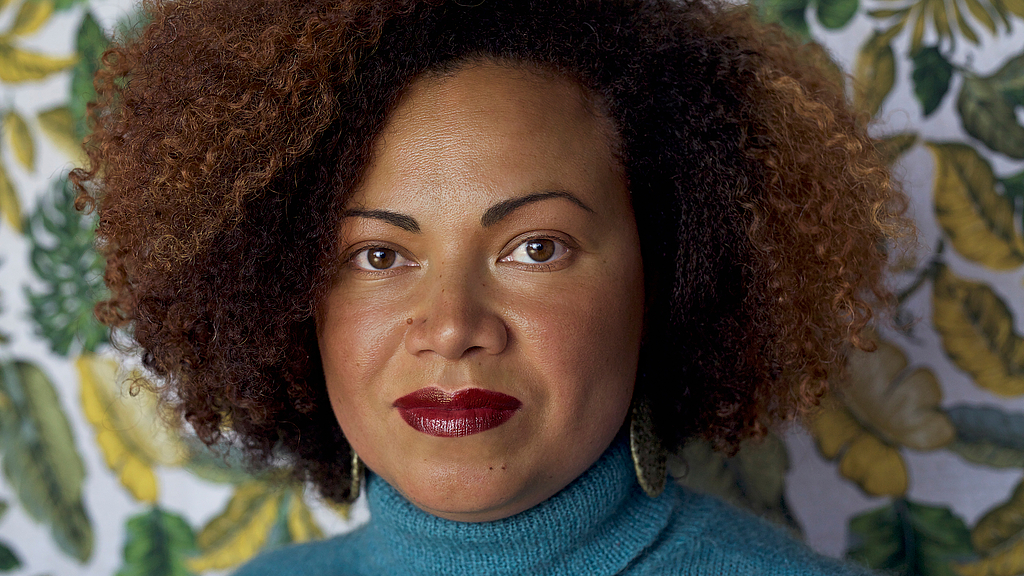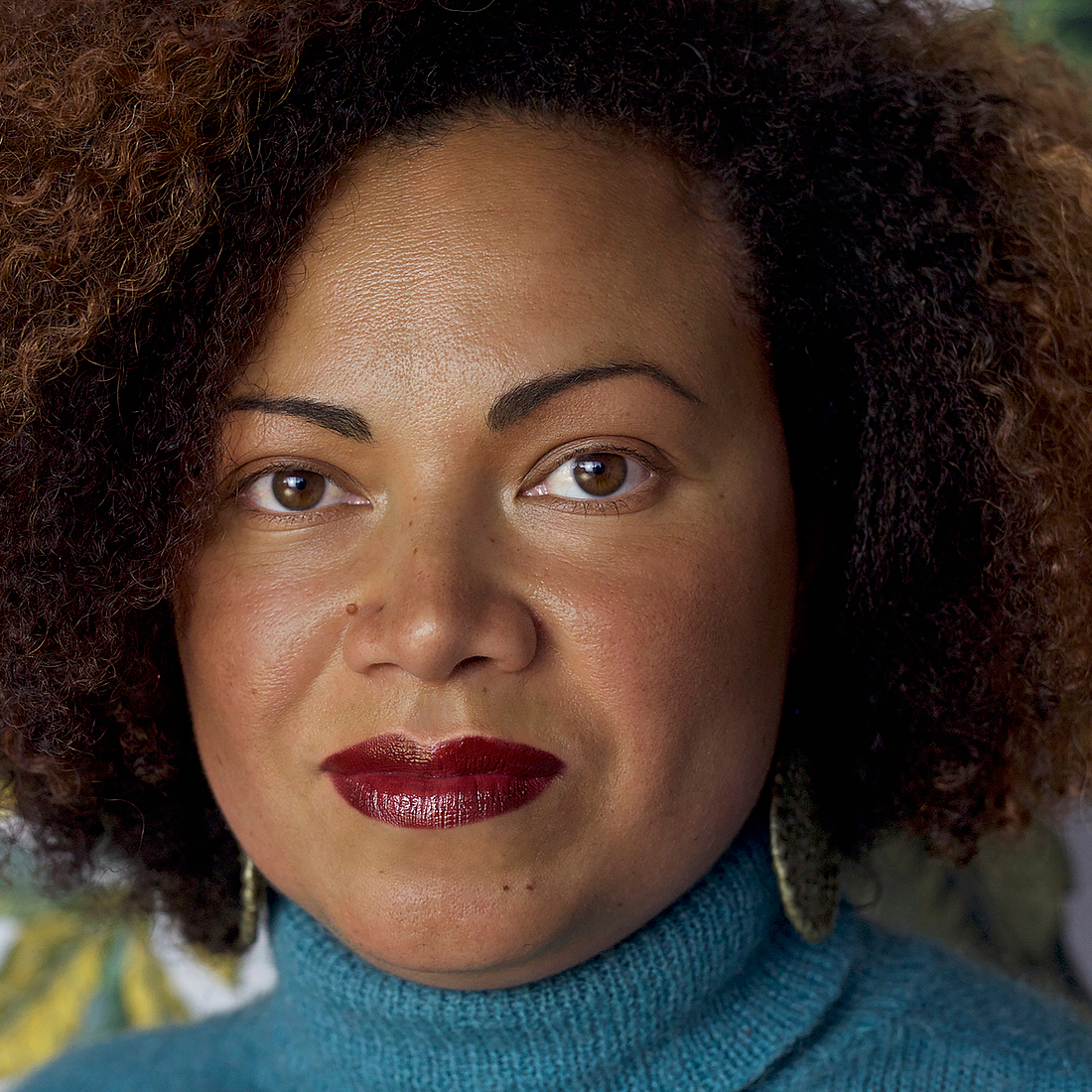Interview with quest scientist Lisa Hilli
Australian artist Lisa Hilli will be a visiting scholar at the German Maritime Museum for one year from April 2021. In this interview, she explains why she is interested in German colonialism.
Mrs. Hilli, what motivated you to apply for the scholarship of a quest scientist at the German Maritime Museum?
I wanted to gain a deeper understanding of the history of German colonialism particularly within Papua New Guinea. Previously, I had only done bits and pieces of research of German colonial influences and impacts through my Master of Fine Arts by Research degree. One area of German colonial history that I looked into was the Luluai Decree implemented by Governor Albert Hahl in Rabaul, my place of birth, that was related to Tolai male body adornment called Midi, a highly ornamented circular shell collar that became culturally devalued through colonial impact. The midi is a body adornment that gave the wearer protection, status and identity within pre-colonial Tolai society. I was particularly interested in the Tolai language word 'Luluai' which in my language originally meant fight warrior or fight leader. When European missionaries arrived and transcribed my oral language of Tinata Tuna, this word Luluai became the word for God. You'll see this word Luluai in Tolai bibles and hear it sung in hymns today. When Albert Hahl introduced the Luluai Decree, it was another devaluing of indigenous leadership systems and hierarchies that existed, which the midi signified, hence the reasons why they are no longer made today. You'll find many Tolai midi in museums around the world. Germans were the first European colonists of my homelands in Papua New Guinea. The repercussion of this history is still evident today both in Papua New Guinea and Australia where I live today. Understanding history helps me understand and creatively interpret what exists today.
As a Leibniz Research Museum, the German Maritime Museum is considered an important extracurricular learning venue, what is the status of museums in Australia and has their role changed during the pandemic?
I noticed a change within Australian museums during the pandemic in terms of how they deliver and make their educational content accessible to the public. Everything went online, exhibitions, lectures, and educational support for students was especially increased for parents and teachers who were largely supporting young people learning remotely in their homes, myself included! Melbourne is notoriously known for having the longest covid lockdown of its city and services. An important shift that I noticed during the 2020 pandemic was the Black Lives Matter movement and its effects on museum curators, collecting initiatives and approaches to developing exhibitions. Museums Victoria was in the process of presenting an exhibition from the Natural History Museum, London, which was problematic in it's British colonial history and curation, which did not necessarily align with the museum's long term strategic vision of placing First Peoples knowledge, culture and histories at the centre of everything it does. This particular collection of objects for this exhibition was titled 'Treasures of the Natural World' and contained largely animal and insect specimens from across the world that was largely collected during the British colonial era. The Natural History Museum prior to the Black Lives Matter movement was not open to Museums Victoria's indigenous / First People's centring approach of its collections and histories, because as I believe, it would demote the collectors, their status and legacies. When the Black Lives Matter movement swept across the globe, the Natural History Museum did a complete shift and realised that their approach of upholding imperialist ideals were outdated and out of touch with it's own violent and oppressive histories latent within museum collections. The pandemic most importantly highlighted inequities not only in society but within museums in Australia and curators that I worked with. What I observed is that museum professionals and institutions awoke to understanding the importance of representation of marginalised voices and stories and that by centring those on the margins of society; disabled, trans, queer, black, indigenous and people of colour, society gains a more nuanced understanding of other people's lived experiences and histories, which in turn creates empathy. This paradigm shift within museums in Australia was happening pre-covid, and creating a lot of discomfort and tension internally because it's about who holds power and space within institutions. If you hold a position of power within an institution, you get to control the narrative of a whole culture, if you choose, and that comes with a great responsibility. The Blak* Lives Matter movement gained momentum in major capital cities in Australia and through the pandemic, emphasised the urgent need for Australian museums to shift and change their structures internally to allow more First Peoples of Australia to hold leadership positions and that's an important and welcome change.
*Blak is a word that originated with artist Destiny Deacon to represent indigenous peoples, and has become lingua franca by most First People's in Australia.
During your fellowship you worked for the project "Colonial History of the North German Lloyd", how exactly did you get involved?
I became involved in the Colonial History of the North German Lloyd project through my collegial relationship with Tobias Göebel. In 2018 I assisted Tobias in his PhD research of German agents in the Pacific region as a Collection Manager for Indigenous Collections at Museums Victoria. Normally the Pacific curator for the collections would assist with such research requests, however I was particularly interested in connecting with Tobias as there were so few research requests relating to German colonial history within Museums Victoria Pacific collections. Being born in Rabaul it was important for me to understand the nature of Tobias' research. A year later, Tobias and I happened to meet again at a Post Colonial academic workshop hosted by the University of Bremen to build relationships between PNG and Germany, which was completely serendipitous. Tobias and I kept in regular contact sharing anything related to German New Guinea collections and history that benefitted both of our research work in museums. It was Tobias who invited me to be a part of the North German Lloyd colonial history project via a fellowship. We shared ideas of what we could pursue that linked both of our interests and fortunately, we were successful in a grant through the German Lost Art Cultural Foundation.
What is exciting about this topic for you?
It's the details of finding other historical pieces of information relating to German colonial history that help me understand why my homeland of Rabaul became the capital of German New Guinea? Why do so many objects, art and photography from New Guinea exist in German museums today? Why did I grow up with German & Papua New Guinea families in Australia? Why is there such a large Chinese-Papua New Guinean community in Rabaul today? I find research insatiable. I've always been driven by the pursuit of knowledge, because when you have knowledge you have power. The acquisition of knowledge has given many authors, anthropologists, historians and scientists a certain authoritative power over the culture and history of Papua New Guinean people, particularly with the dissemination of their knowledge through public and academic outputs. Having the time to understand German colonial history in Papua New Guinea, as a Papua New Guinean woman, allows me to form a very unique perspective, especially as my own life has been implicated by German colonialism and not by choice. Understanding the shipping networks of the North German Lloyd and many other German shipping companies operating in the Pacific, helps me understand another layer of colonial mechanisms. Colonies across the globe in the 19th century would not have prospered or survived without the infrastructure of shipping companies to bring in supplies and extract and export local commodities such as copra and indentured labour.
Does the project tie in with your artistic work?
Yes. Creative research is an important part of my artistic process. One of my key interests in German colonial history is within copra plantations in New Guinea. Previously, I've done a significant amount of research that led to re-enacting or remaking colonial history relating to trade relationships between Melanesians and Europeans through video art and textiles. I always knew that copra from plantations in and around Rabaul was exported back to Germany, Hamburg in particular. The North German Lloyd shipping company was a significant part of exporting, facilitating and delivering this copra for commercial gain. Seeing the digitised photographs of NDL captain Carl Nauer from the Obergünzberg Sudsee Museum has exposed me to a lesser known visual history of what everyday life in the colonial Pacific was like for both New Guinea and European people both on land and at sea. I've started creating a new series of photographic interventions of archival images relating to the German colonial era in Rabaul, that will be exhibited at the Brücke Museum in Berlin from December 2021 - March 2022. Through the project I've also discovered hidden oral and genealogical histories of Melanesians travelling in foreign ships within Tolai "Abot" (boat) songs to German plantations in Samoa and beyond. One creative output was sharing a Youtube playlist of some of these Abot (boat) songs which are largely sung in Tok Pisin and my language of Tinata Tuna. Research for me is like finding seeds of potential, and if the right conditions allow they will germinate into something beautiful, hopefully.
A visit to Germany was out of the question due to the pandemic, how did the intercontinental collaboration with the colleagues in Bremerhaven work out?
I think we did the best we could given the challenging circumstances of living and working through a global pandemic. Tobias and I tried to meet as regularly as we could to touch base, scheduled around opposing time zones. We worked like "ships in the night" We kept each other updated via email and shared documents and research notes electronically. Digital technology was crucially important for gaining access to collection materials, I relied largely on electronic and digitised records, where I could access them and if this was not possible, searching the internet for hard copies of books. The downside of not being able to travel to Germany, was not being able to physically access collections and meet other DSM colleagues. Chance meetings with people are an important part of networking and supporting a dynamic research environment. This networking has happened in other ways, via a conference that I participated in earlier in the year "Seeing the Other" which focused on Dr. Gisela Parak's research of historical travel photography by individuals employed in the German Imperial Navy .
Will the work at the DSM influence your further artistic work in Australia?
It already has. Some of the research findings that I've discovered are regularly shared publicly via my social media accounts and expand upon existing research. I received a significant amount of interest from museum, gallery, academic and creative people alike from not just Australia but across the globe. German colonial history within the Pacific region is not common knowledge within Australia. Most Australian people don't even realise how close the colony of German New Guinea was to Australia. Historically, Australian ports, such as Cooktown (named after British lieutenant James Cook) and Sydney were important for German and many other European vessels as stopover and transit points for the establishment and continual expansion into the Pacific region during the colonial era via ships. I imagine any future artistic outputs will deeply inform curatorial and creative projects relating to complex Melanesian and Asian human stories implicated in being transported on ships for enforced recruitment or indentured labour relating to colonial history.
Lisa Hilli considers herself a Tolai/Gunantuna woman living, working and learning on the guardian lands of the Boon Wurrung and Woi Wurrung peoples - people of the Kulin Nation. Full of respect, she acknowledges the past and present of her elders and the community still living today.

Fellow and artist Lisa Hilli.
Photo: Atong Atem

